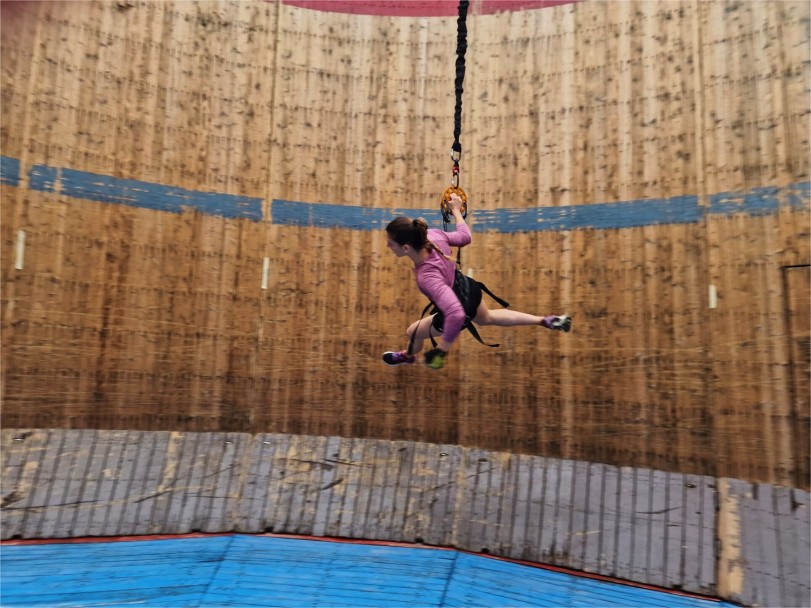A research team from the University of Milan has proposed a groundbreaking method to combat muscle and bone deterioration in astronauts during lunar missions: running horizontally inside a cylinder. Their innovative findings, detailed in the journal Royal Society Open Science, offer a promising solution to mitigate the adverse effects of low gravity on the human body.
Extended exposure to low-gravity environments, such as the International Space Station (ISS) or the moon, can lead to significant muscle and bone loss in astronauts. While exercise, like treadmill running, is effective in countering these effects in microgravity environments like the ISS, it may not suffice for lunar missions where gravity is approximately one-sixth that of Earth. Recognizing this challenge, the research team explored the concept of running inside a cylinder as an alternative approach.
Inspired by the “wall of death” attractions commonly seen at county fairs, where motorcycle riders defy gravity by riding horizontally inside a large cylinder, the researchers adapted this concept for human locomotion on the moon. While running horizontally at high speeds inside a cylinder would lead to falling on Earth due to gravity, the reduced gravitational force on the moon makes it feasible for astronauts to maintain their footing.
To validate their hypothesis, the researchers conducted experiments using a borrowed cylinder from a local fair. Volunteers wore harnesses attached to bungee cords, which simulated the reduced gravity experienced on the moon. Running at an average speed of 6 meters per second, the volunteers exerted forces against the cylinder walls similar to those encountered during normal running on Earth.
The study’s findings suggest that running inside a cylinder could provide sufficient resistance to prevent muscle and bone atrophy in lunar conditions. If integrated into astronauts’ daily exercise routines, this innovative approach may help sustain their physical health during extended lunar missions. Moreover, this research underscores the importance of innovative thinking in addressing the unique challenges posed by space exploration.















































